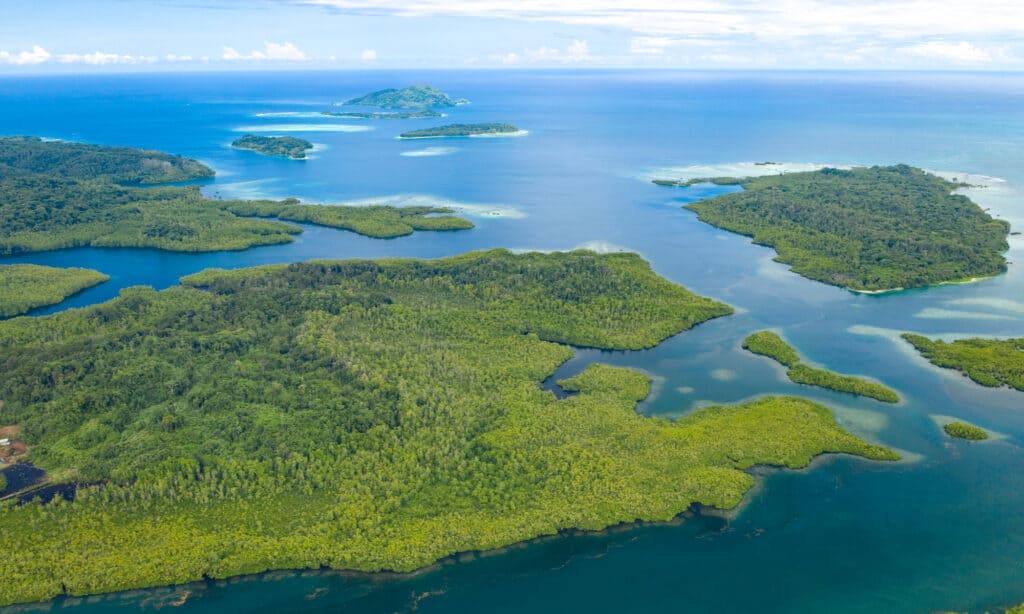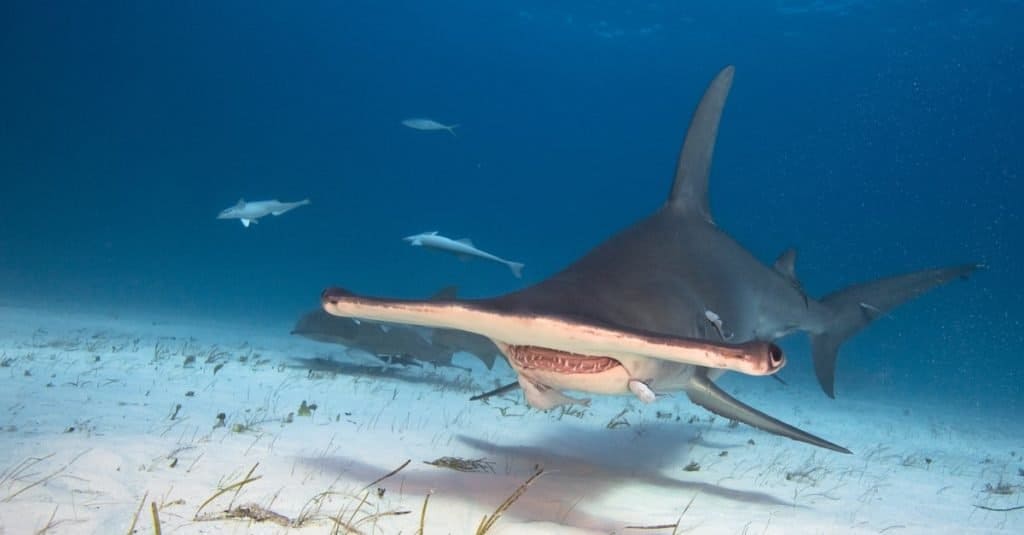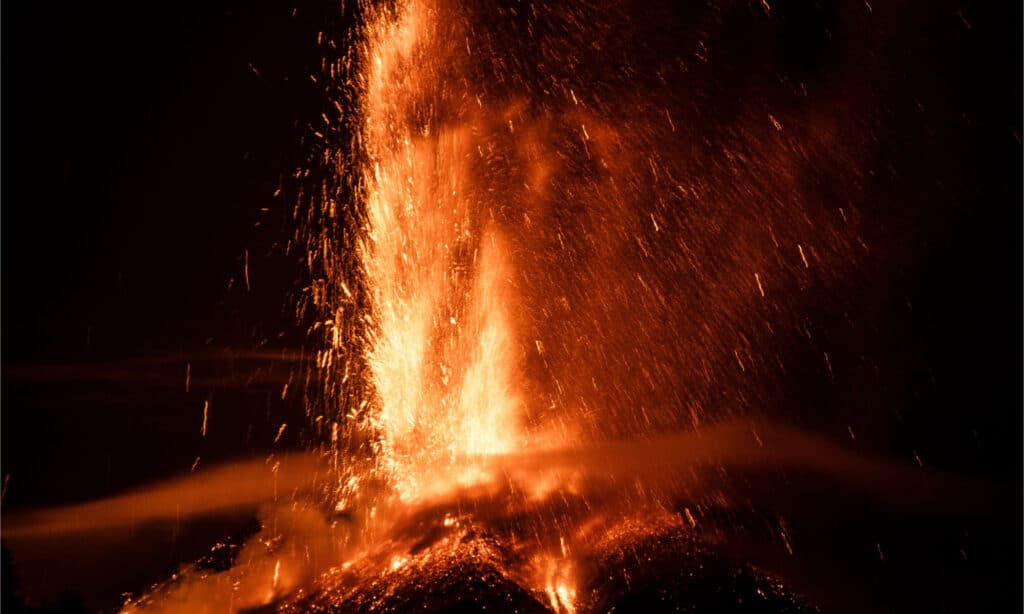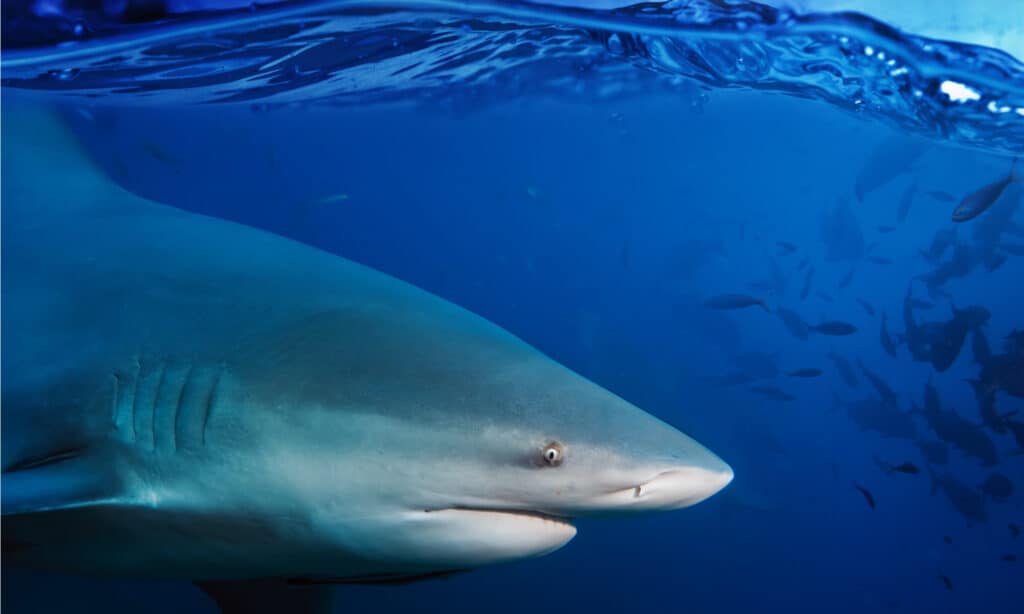“SHARKCANO”—the first-ever shark volcano in the world! Sure, it may sound like a cheesy sci-fi movie, but believe it or not, this thing is real. Yes, there are actual, real-life sharks living inside of a submarine volcano. And this shark-infested volcano just erupted in the Pacific Ocean! NASA recently collected an image of a large plume emerging from Kavachi, a submarine volcano filled with sharks. But what are a bunch of sharks doing inside this active underwater volcano?
The Kavachi “Shark” Volcano
The notorious “Sharkcano”, known as the Kavachi Volcano, is in the Solomon Islands. This volcano gets its name from the sea god, “Kavachi”. Locals on the islands often call the volcano “Rejo te Kvachi” or “Kavachi’s Oven”. Kavachi is a submarine volcano in the Pacific Ocean and one of the most active ones around. Its first officially recorded eruption was marked in 1939, and the volcano has been continuously erupting ever since. Each time it erupts, lava from the volcano creates new islands nearby. However, these islands are small and shallow, so they are quickly reclaimed by eroding ocean waves.

The Kavachi Volcano is near the Solomon Islands.
©Gilmore Tana/Shutterstock.com
Today, the summit of the Kavachi Volcano is around 65 feet below the ocean’s surface. From here the volcano projects quite a masterful display of phreatomagmatic eruptions. These unique eruptions occur when the volcano’s hot magma hits the water of the ocean. This collision creates an intensely powerful explosion. Steam clouds, ash, and volcanic rock fragments are blasted into the air above the ocean’s surface. Simply put, this is not a very safe place to be.
A Shockingly Sharky Discovery

The hammerhead’s head is an amazing piece of anatomy that maximizes the ability to find stingrays.
©frantisekhojdysz/Shutterstock.com
Scientists accidentally made a very shocking discovery when exploring Kavachi’s underwater caldera in 2015. The original purpose of their expedition was to film and research the volcano itself, hopefully during an eruption. Soon enough there was a loud and violent explosion, allowing the team to capture some very exciting footage of one of Kavachi’s infamous phreatomagmatic eruptions.
Wanting a closer look, Dr. Brennan Phillips, a volcanic researcher, loaded an 80-pound baited drop camera straight into the heart of the volcano. The camera landed inside the crater at about 150 feet deep. The team was completely dumbfounded when they saw a large silky shark swimming straight toward the camera!

Silky sharks are the kind of sharks found in the volcano’s crater.
©Shpatak/Shutterstock.com
Several other marine animals also made an appearance inside the volcano’s crater. There were gelatinous zooplankton, larger fish like snappers, bluefin trevally, and a sixgill stingray. The most shocking, however, were several large silky sharks and scalloped hammerhead sharks! That’s right folks, actual real-life sharks swimming inside an underwater volcano! As Dr. Phillips put it, “Did we discover a ‘Sharkcano?’ Yeah, we did!”
Can Sharks Really Live in a Volcano?

There are possibly hundreds of thousands of submarine volcanoes in oceans across the Earth.
©Wead/Shutterstock.com
As you can imagine, the extremely harsh environmental conditions of an underwater volcano are not exactly hospitable for marine animals. In fact, analysis of the Kavachi Volcano shows that its lava is both andesitic and basaltic with silica, iron, and magnesium. The water surrounding the volcano is scalding, acidic, and muddied with sulfuric and volcanic particles. These conditions are typically bad for any fish, shark, or other types of marine life. So, could sharks really survive in such a hostile environment?
The answer—quite surprisingly—is yes, they can! Not only do sharks survive in underwater volcanoes, but it seems that they thrive there. In fact, Kavachi’s entire marine community appears to be accustomed to its acidic, blistering hot water and frequent eruptions.
Now, onto a bigger question: Why would a shark want to live inside an underground volcano? And what happens to the sharks when the volcano erupts?
Why Would a Shark Want to Live Inside a Volcano?

Silky sharks were just one of the many species of marine life found swimming inside the Kavachi Volcano.
©Shpatak/Shutterstock.com
The murky waters surrounding volcanoes do not appear to bother sharks at the very least. In fact, it is perfect for these large marine predators. While other fish cannot see well in these turbid waters, sharks continue to hunt just fine. This is because sharks have a secret weapon: electroreceptors called “ampullae of Lorenzini” that can detect electric fields in the water.
These unique electroreceptors give sharks a superpowered sense that allows them to navigate even in the murkiest waters. When fish and other marine animals move in the water, they create electrical currents. Sharks quickly sense these electrical fields, allowing them to track and ambush their prey.
In addition, volcanic basalt rock is extremely rich in minerals like iron and magnesium. Its mineral-rich composition makes it an excellent base for coral to develop and grow. It is also jagged and porous with plenty of holes, cracks, and crevices for fish to hide in. Because of this, ocean waters near volcanic areas often have large underwater communities full of marine life. This makes it an ideal hunting ground for a shark.
How Do Sharks Find Submarine Volcanoes?

Sharks have electroreceptors that allow them to sense electromagnetic fields and temperature shifts.
©Willyam Bradberry/Shutterstock.com
Volcanoes provide a sort of oasis in the middle of the vast, open water of the ocean. Volcanic islands are excellent feeding pit stops for sharks because they have lush reefs that provide shelter and homes to a wide diversity of marine wildlife. But how do sharks find these isolated, volcanic islands?
Volcanic lava is full of iron, which is very magnetic. We now know that sharks can detect the Earth’s magnetic fields and use these to navigate through the expansiveness of the ocean. Scientists are still not entirely sure how sharks can detect magnetic fields. However, their ampullae of Lorenzini may play a part in this magnetic sensitivity since electricity and magnetic fields often go hand in hand. It is possible that sharks use the lava flows of volcanic islands and submarine volcanoes as a type of compass.
What Do Sharks Do When Volcanoes Erupt?
Sharks are sensitive to both the electric fields in the ocean as well as the Earth’s magnetic fields. It is also likely that their superpowered senses can alert them to upcoming volcanic eruptions. After all, many animals can sense impending earthquakes days before they happen, so why not an erupting volcano?
The photo featured at the top of this post is © fboudrias/Shutterstock.com
Thank you for reading! Have some feedback for us? Contact the AZ Animals editorial team.






